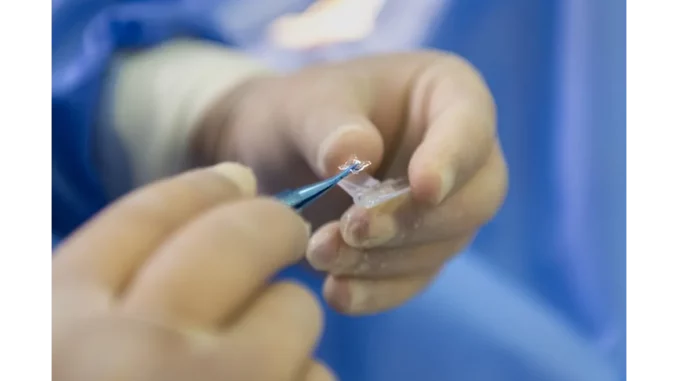
In the rapidly evolving terrain of medical technology, few sectors have witnessed growth as dynamic as the vitrectomy devices market. Forecasts indicate that the global market is set to escalate from USD 1.19 billion in 2023 to an impressive USD 1.89 billion by 2032. Such growth carries profound implications for both healthcare providers and patients. To delve deeper into the factors driving this expansion, I engaged in an insightful conversation with Dr. Eleanor Whitmore, a distinguished ophthalmologist and researcher at St. James Hospital, who has been at the vanguard of integrating these technological advancements into her practice.
Dr. Whitmore offered a wealth of firsthand experiences and insights into how the vitrectomy devices market is being shaped by the increasing incidence of diabetes-related retinal conditions and significant strides in technology. “This is an exhilarating period for ophthalmology,” she remarked, her enthusiasm unmistakable. “The rise in diabetes-related retinal disorders, such as diabetic retinopathy, has spurred an urgent demand for enhanced surgical solutions. In my practice, there has been a noticeable uptick in patients affected by these conditions, necessitating state-of-the-art interventions.”
She elaborated on the correlation between an ageing population and the prevalence of retinal diseases. “Conditions like macular holes and retinal detachment are clearly linked to age. With advancements in vitrectomy technology, we are not merely keeping pace with these rising needs; we are setting new benchmarks for treatment outcomes,” Dr. Whitmore explained.
The conversation naturally shifted towards the technological innovations propelling this market growth. Dr. Whitmore emphasised several pivotal advancements that have revolutionised surgical practices. “The evolution in vitrectomy machines over recent years has been extraordinary. Enhanced fluidic control, accelerated cutting rates, and improved management of intraocular pressure have all contributed to surgeries that are more precise and successful.”
She further elaborated, “The advent of single-use disposable products, like vitrectomy packs, has transformed our approach by reducing infection risks and streamlining the surgical process. These innovations have made vitrectomy more accessible to a wider patient demographic, which is essential given the escalating demand.”
Dr. Whitmore also stressed the critical role of early diagnosis and intervention. “The ability to detect retinal conditions earlier, coupled with effective treatment via advanced vitrectomy devices, not only enhances patient outcomes but also stimulates overall market demand. This scenario benefits both patients and healthcare providers.”
As our discussion deepened, Dr. Whitmore shared her perspective on the regional dynamics of the vitrectomy devices market. “North America, particularly the United States, leads in adopting these advanced surgical technologies, supported by a strong healthcare infrastructure. However, significant growth is also evident in the Asia Pacific region. Countries such as China and India are witnessing a surge in retinal diseases, driven by an ageing population and lifestyle changes. This, combined with an expanding healthcare infrastructure, is propelling the demand for vitrectomy devices.”
In contemplating the future, Dr. Whitmore expressed optimism. “I believe we are on the cusp of a transformative era in retinal surgery. The continuous investment in research and development by leading companies is vital. As these technologies become more refined and accessible, we can anticipate even greater advancements in patient care.”
Reflecting on our conversation, it becomes evident that the vitrectomy devices market stands at a critical juncture. The intersection of escalating healthcare needs, driven by demographic shifts and the rising prevalence of diabetes-related retinal conditions, with cutting-edge technological advancements, is reshaping our understanding and treatment of these complex diseases.
As my interview with Dr. Whitmore drew to a close, her passion for her work was strikingly evident. Her insights offered a compelling glimpse into a field that is not only addressing current challenges but is also poised to shape the future of retinal health. For healthcare professionals, patients, and industry stakeholders, the growth of the vitrectomy devices market presents an opportunity to enhance lives through innovation and dedication.
Ultimately, as Dr. Whitmore succinctly noted, “The true beneficiaries of this technological race are the patients who gain improved vision and quality of life. And that is what renders these advancements genuinely worthwhile.”


Be the first to comment